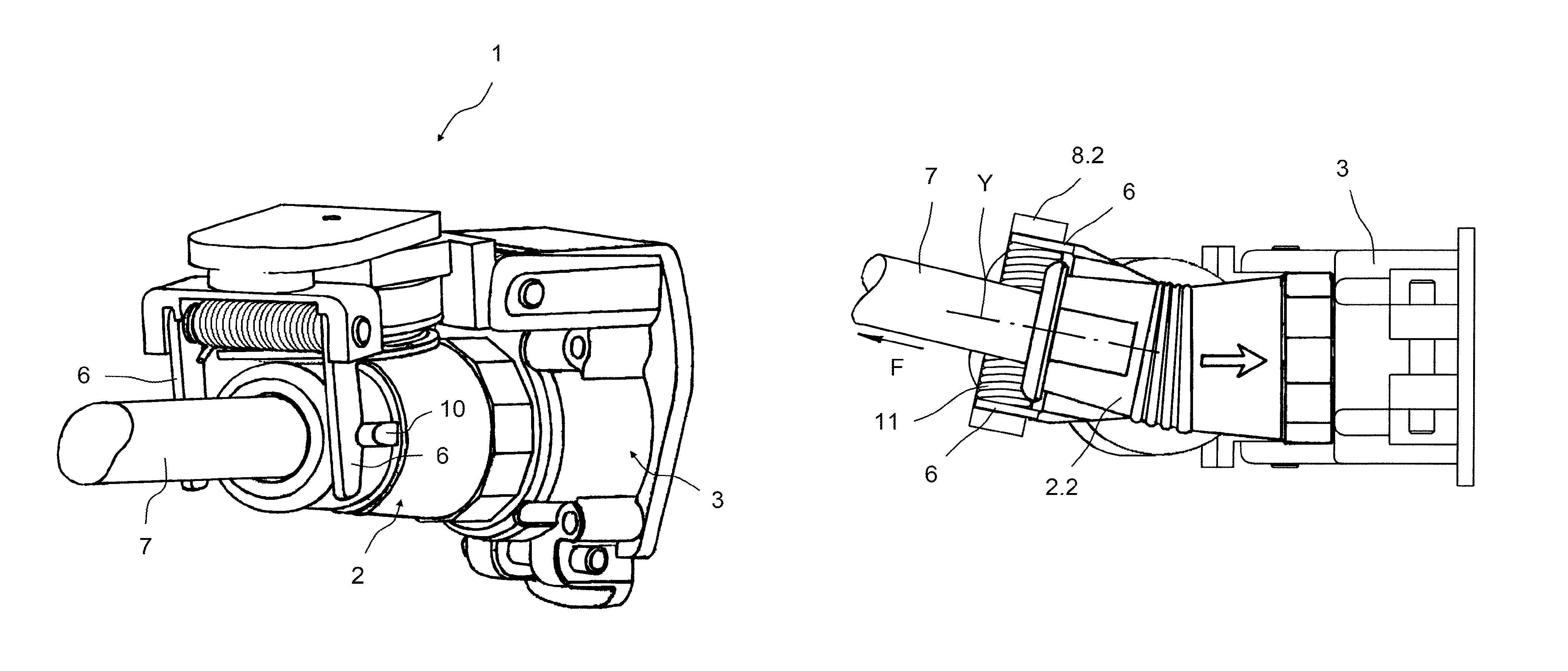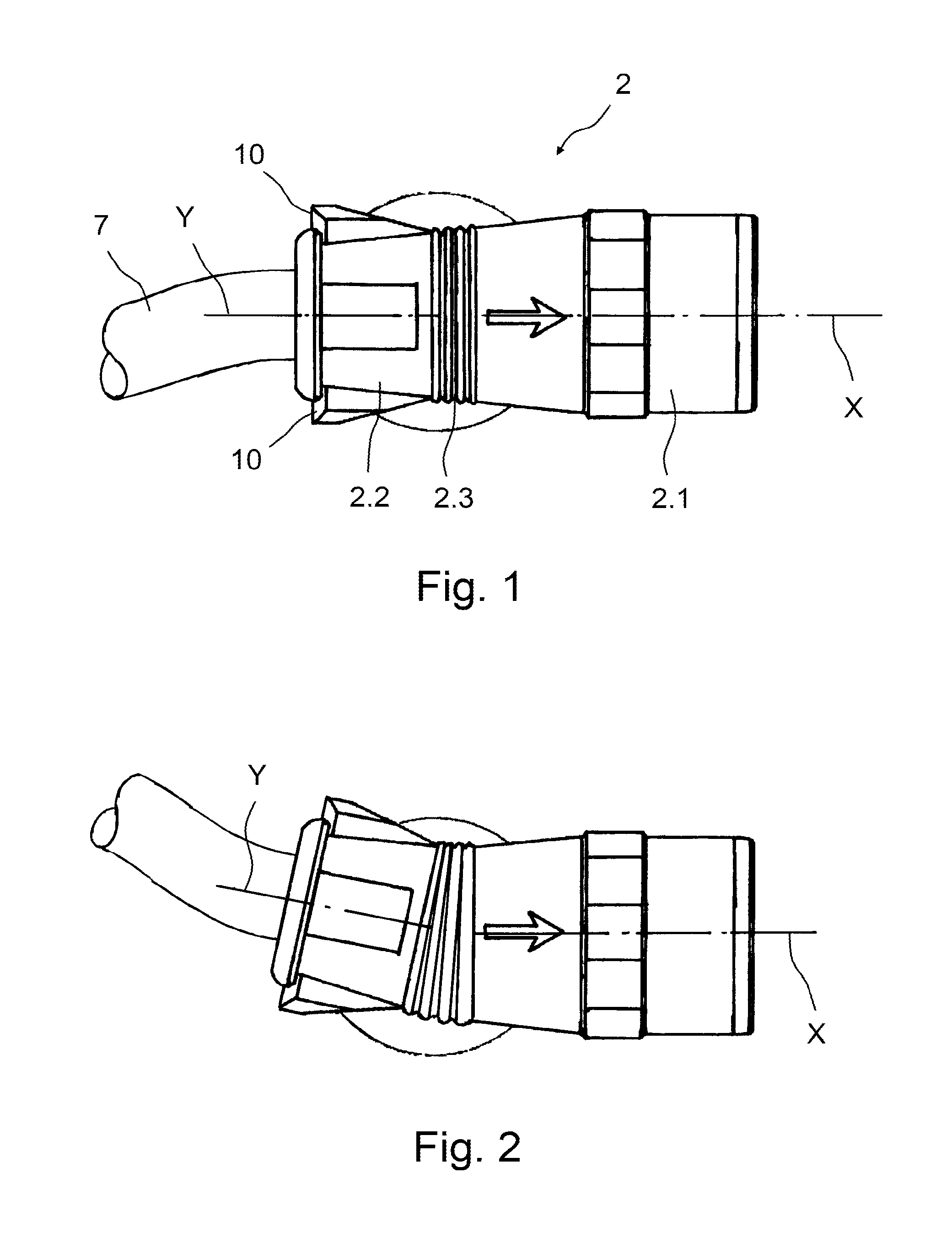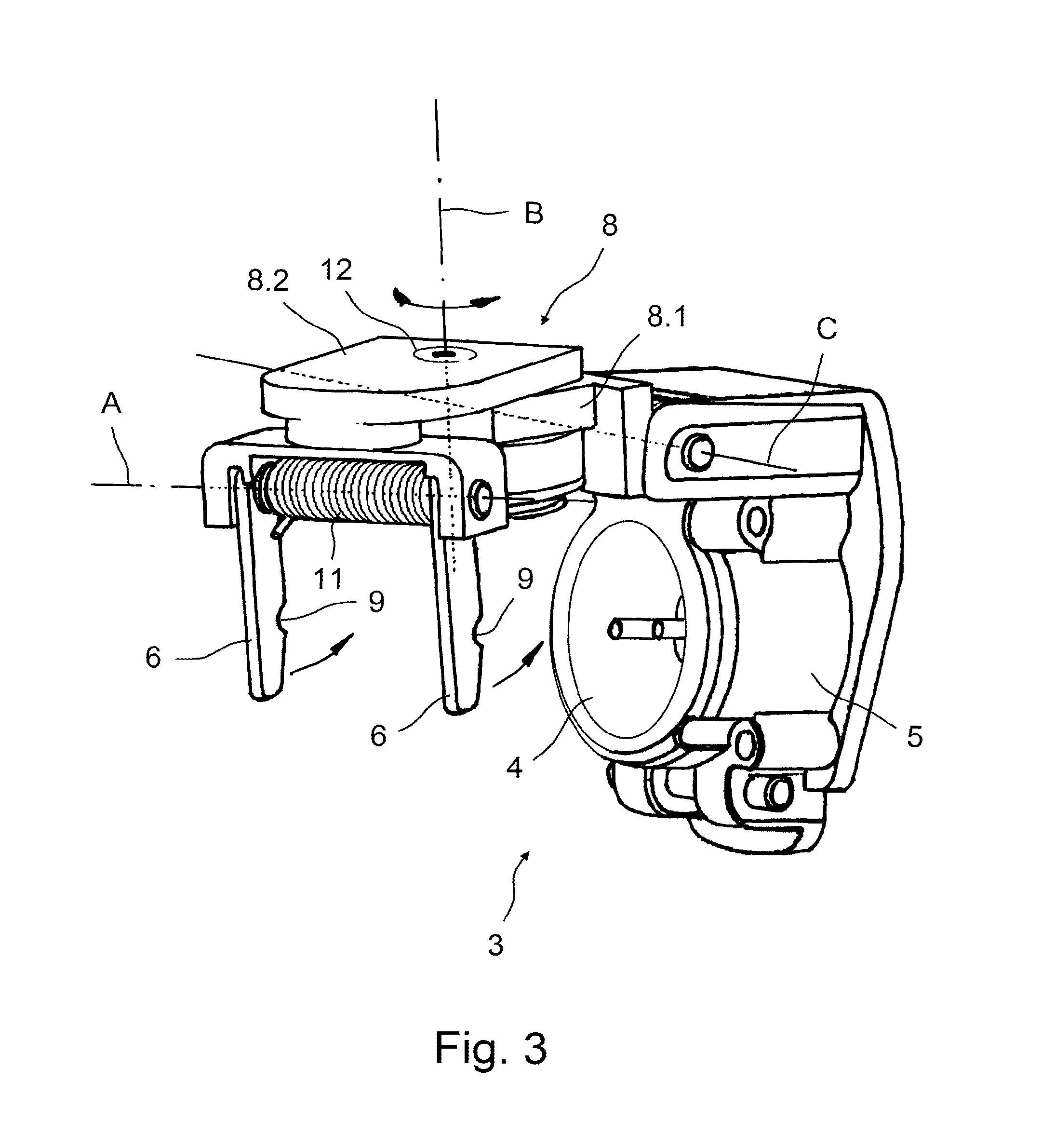Electrical connector
a technology of electrical connectors and connectors, applied in the direction of charging stations, transportation and packaging, coupling device connections, etc., can solve the problems of tearing off the electrical connecting cable, damage to the plug-type connection or the cable, and the plug-type connection is not configured
- Summary
- Abstract
- Description
- Claims
- Application Information
AI Technical Summary
Benefits of technology
Problems solved by technology
Method used
Image
Examples
Embodiment Construction
[0027]In the following description, like components will be designated with like reference numbers. If a drawing contains reference numbers that are not explained in more detail in the associated description of the drawings, reference will be made to preceding figure descriptions or figure descriptions to follow.
[0028]FIG. 1 shows the plug 2 of a plug-type connection according to the invention. It comprises a first front plug part 2.1 and a second rear plug part 2.2, the two plug parts 2.1 and 2.2 being connected to each other by a flexible plug part 2.3. The plug 2 can be plugged into the socket illustrated in FIG. 3 with the first front plug part 2.1. The cable 7 is passed out of the second rear plug part 2.2. Furthermore, two protrusions 10 can be seen on the rear plug part 2.2, whose function will be explained below. FIG. 1 shows the plug in an unloaded condition. The longitudinal axis X of the first plug part 2.1 coincides in this condition of the plug with the longitudinal axi...
PUM
 Login to View More
Login to View More Abstract
Description
Claims
Application Information
 Login to View More
Login to View More - R&D
- Intellectual Property
- Life Sciences
- Materials
- Tech Scout
- Unparalleled Data Quality
- Higher Quality Content
- 60% Fewer Hallucinations
Browse by: Latest US Patents, China's latest patents, Technical Efficacy Thesaurus, Application Domain, Technology Topic, Popular Technical Reports.
© 2025 PatSnap. All rights reserved.Legal|Privacy policy|Modern Slavery Act Transparency Statement|Sitemap|About US| Contact US: help@patsnap.com



